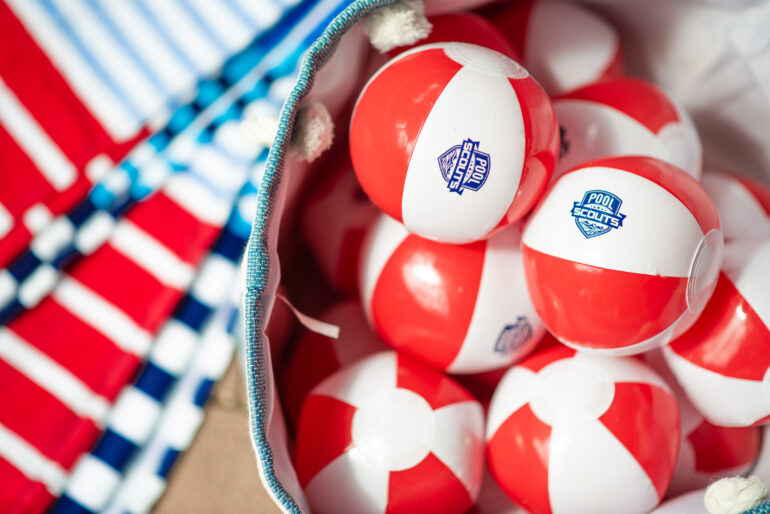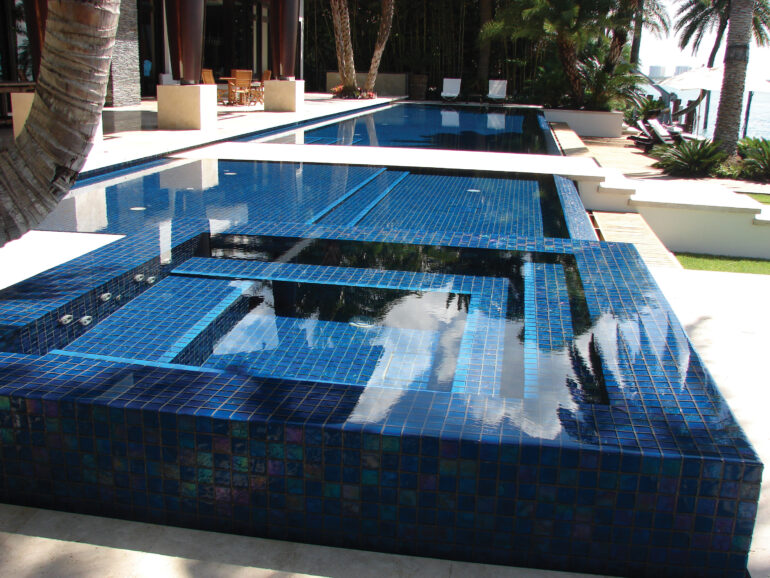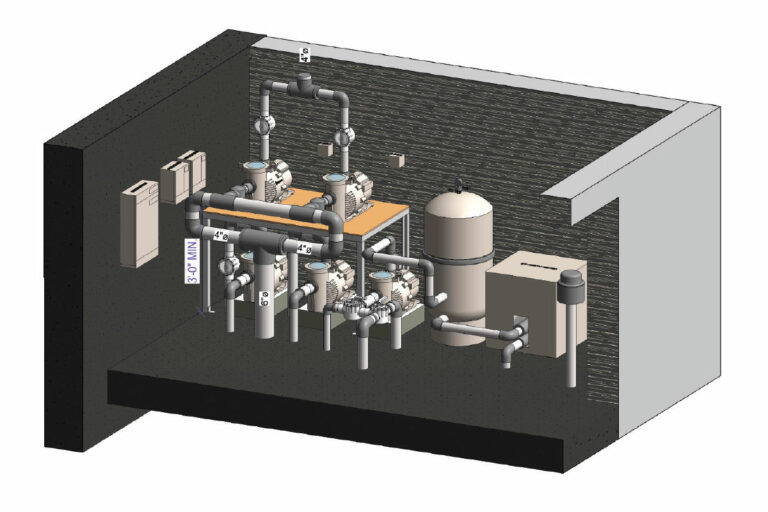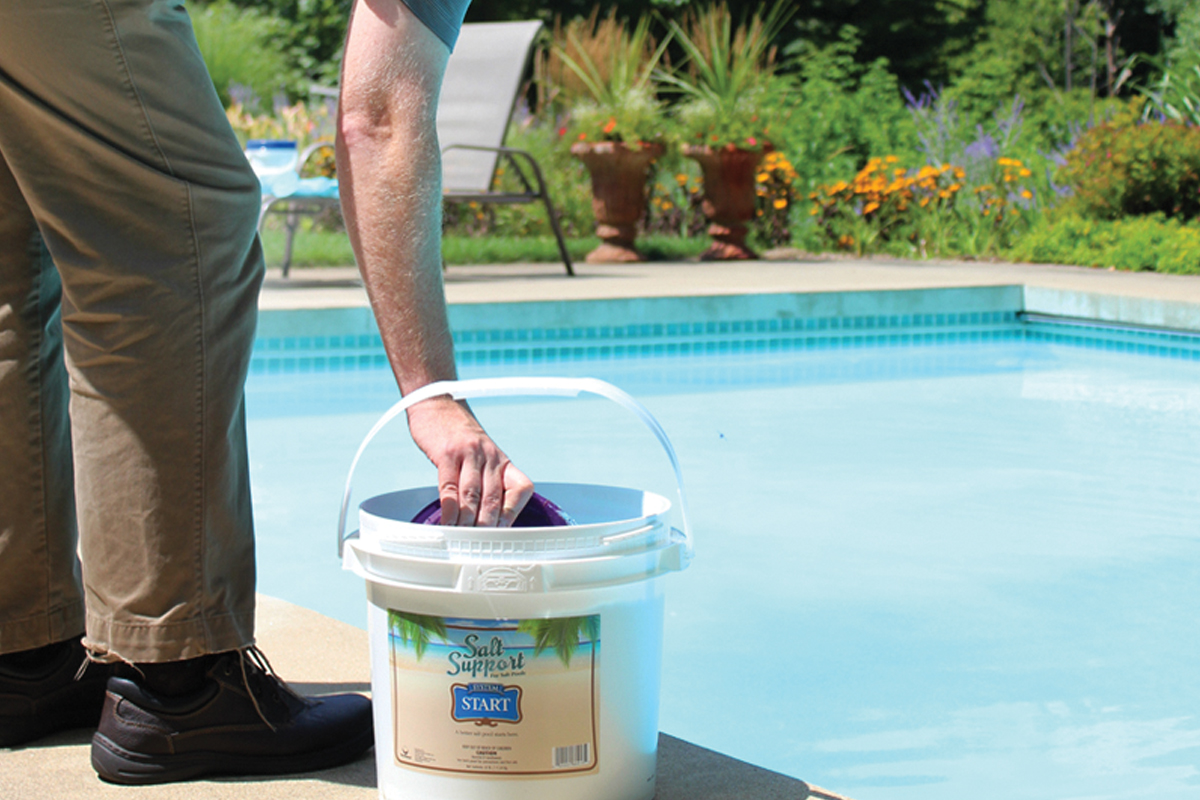Servicing High-End Pools — Finishes
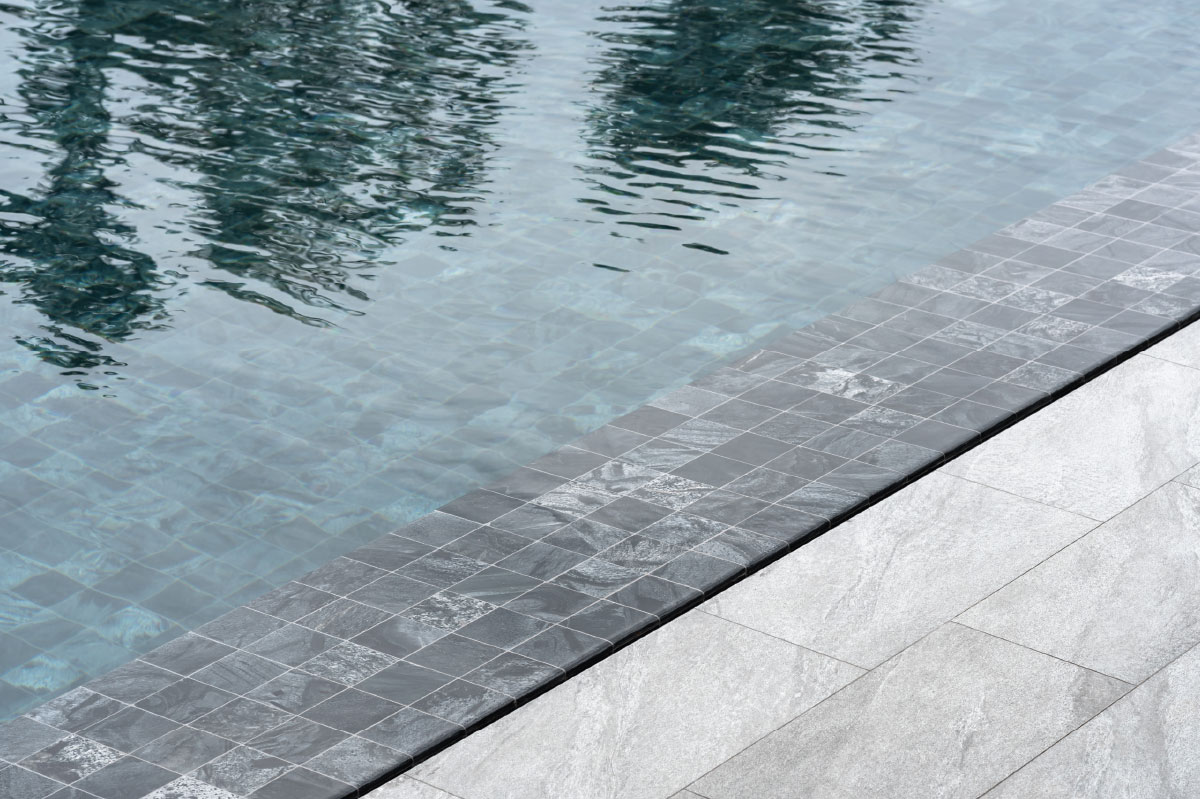
It’s not an exaggeration to say great pools demand a lot from their finishes. Pumps and plumbing have to work well but don’t have to look good. Aesthetic amenities have to look good — and not much else.
Features like glass tiles and acrylic panels, on the other hand, are asked to endure the intense pressure of containing the water while also reflecting light, adding depth of color, creating texture and impressing guests. Maintaining finishes can be fairly easy, provided the builder and service professional communicate, collaborate and keep the pool’s finishes front of mind from the beginning.
What makes a luxury finish?
If a team is called to service a luxury pool, chances are good they’ll spend the day around lots of glass tiling.
“The most luxurious, high-end pool finishes are full tile,” says Arthur Mintie, senior director of technical services of LATICRETE International, Inc. “But they also require the most effort in terms of labor and preparation.”
Ken Milbery, director of technical services for Lunada Bay Tile, takes that notion a step further.
“When we talk about high-end luxury pool finishes, nothing says luxury more than glass tile,” Milbery says. “The refraction of light and iridescence in colors that glass offers gives pools a quality that no cementitious or porcelain tile can offer. If a client wants a true crystal-clear color, glass tile is where it’s at.”
A service crew’s ability to maintain the form and function of glass tiling and other luxury finishes is directly connected to the actions of the builder.
“Most of the finishes on the market today are good products for use in the pool if they are installed properly,” Milbery says.
Mintie concurs. “There’s a lot on the front end with the installation methodology that ensures the potential for long-term performance,” he says. “If the movement joints are maintained and the sealant doesn’t tear away or have gaps, if they examine where filter systems penetrate through the tile finish and make sure the sealant joint is nice and tight, the tile system has the best chance of surviving.”
A Pool’s Finish is Only as Good as its Water Quality
Good chemistry ensures quality water that’s safe and healthy, not only for the people splashing around, but also for the finishes that spend their lives in direct contact with that water.
“Maintaining the pool water chemistry is one of the most important things for any tiled, partially tiled or even plaster pool,” Mintie says. “If the chemical makeup of the water goes out of balance, it can have a detrimental effect on the finishes.”
It’s not only about chemistry: Filling and draining procedures also have a lot to do with how well any service department will be able to maintain a pool’s finish.
“Making sure that water fill rates and drain rates are adhered to, not filling up or draining too fast, is another key part [of finish maintenance],” Mintie says.
For Milbery, startup procedures must also consider water composition — particularly in the earliest stages. “All tap and fill water must be tested prior to filling any pool, no matter which finish was chosen,” he says. “Pool finishes, in general, are more susceptible to staining, discoloration and scaling during the first 28 days when the majority of hydration is taking place.”
Opening, Closing and Surface Cleaning
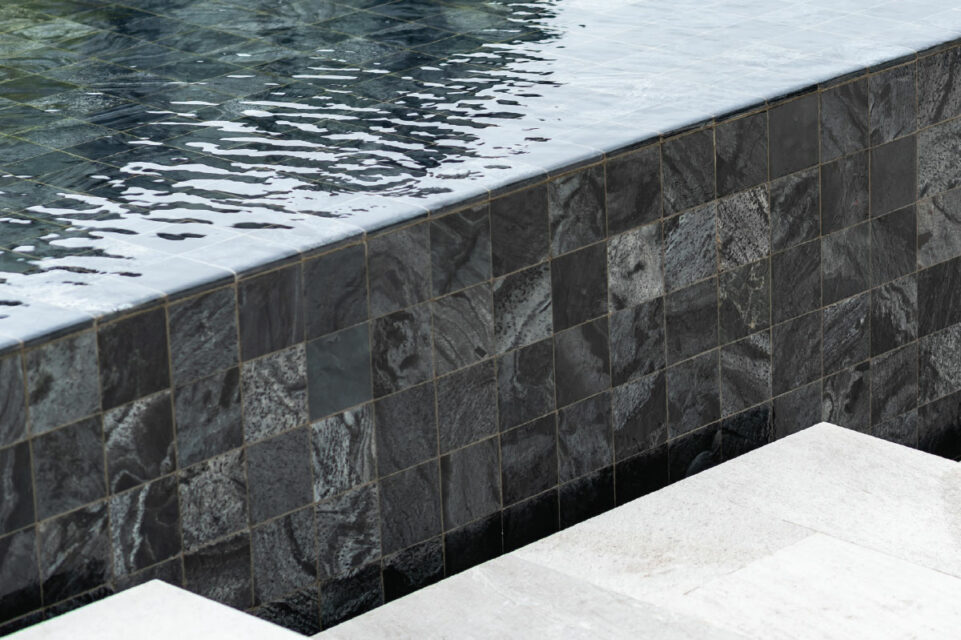
Great finishes also rely on proper closing procedures at season’s end.
“Lower the level of the water correctly, remove accessories like skimmer baskets and cleaners, drain the plumbing and filters properly, check the heating equipment and do some maintenance to the mechanicals of the pool itself,” Mintie says. “Finally, protect those finishes by adding winterizing agents and covering the pool correctly so that it stays free of external pollutants.”
Although he stresses regular vacuuming when the pool is in use, Mintie also suggests taking advantage of the periods when the pool is drained. “Check for scale buildup and efflorescence,” he says. “Use a good, nonaggressive material that won’t harm the finish but will clean any buildup for a more brilliant finish that holds up better over time.” Milbery adds that weekly brushings are key. From the start, the builder and service professional need to communicate about the care of everything, including the pool finishes. “I would recommend working with the pool builder to verify if any special considerations or requirements for maintenance were specified by either the setting material manufacturers or the tile manufacturer,” Mintie says. “All parties should be on the same page. It all comes down to training, proper installation and learning the ins and outs of the materials you are using.”

